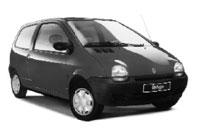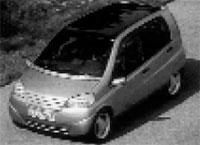Smaller and smaller cars
The prototypes of small cars presented by Mercedes and BMW at the car exhibition held last fall in the city of Frankfurt caused great expectation. This wave of small cars is not the result of the economic crisis. Administrations increasingly place strict limits on consumption and exhaust gases, and manufacturers must adapt their products.

In the United States, for example, the Clean Air Act expects that 2% of cars sold in California in 1998 will be zero emissions (i.e. electric cars). Therefore, these cars will be of urban use and limited autonomy. These zero emissions will be accompanied by the ultra low emission category and European standards will be in this line by the year 2000. They will limit carbon oxide, unburned hydrocarbons and nitrogen oxides from gases emitted by the exhaust pipe, facilitating their respect in small engines. At equal distance, since the volume of gas emitted in these engines is lower.
The European Community wants to limit the consumption of each car by 2005. Smoking up to 5 liters per 100 kilometers. To move below this consumption you have to make small cars and place diesel engines. Diesel, which consume 25% less than gasoline engines in the same job.
This limit of 5 liters of the aforementioned consumption is the arithmetic average of the consumption of the car in three regimes, that is, to 90 km/h, to 120 km/h, and in the interior of the city, the arithmetic average of three. Taking all the cars currently manufactured in Europe, this consumption is 7.05 liters per 100 kilometers.
Given that in 2005 the average consumption will be up to 5 liters, current low consumption cars will have to work less to improve their performance. From the point of view of the brands, it can be said that Renault works at 6.54 liters and Peugeot at 6.37 liters. In Germany, BMW consumes 9.18 liters and Mercedes consumes 8.65 liters per car and 100 kilometers. This difference between these two German brands is because Mercedes uses more diesel engines in its cars.

The small Vision A car, presented by Mercedes at the Frankfurt trade fair, is of great interest. Compared to the Renault Twingo model, both are of a single space and the four wheels are in the four vertices of the car. Both have adjustable rear seats. It is delayed by 17 centimeters or 10 centimeters in Twingon and Vision A to leave more space to the person who sits. When they advance, on the contrary, it is the place where more suitcases and packages are inserted behind. The rear seats are also bent for a larger trunk.
Mercedesa's car is less than Renault's, 8.3 centimeters less in length and 3.7 centimeters less wheelbase. For this, Mercedes has replaced the engine and transmission with the passenger seat.
It is a car with a completely smooth pavement. The pavement consists of two strong longitudinal beams, under which are all mechanical organs: inclined motor 60º, gearbox and fuel tank. Consequently, the car is short but high, 15 centimeters higher than in Twingo. But to walk within the city, sitting above has its charm. Aerodynamics is also not so good, but it should be noted that this Vision A is the most common at low speed. However, at 120 km/h the Mercedes house only consumes 5.2 liters (Twingo burns 7.1 liters).
Another great advantage of the Vision A model is the security aspect. In the event of a frontal collision, the propeller attachment points (engine and gearbox) are broken and retreated without contact with passengers. The energy of shock is thus absorbed by programmed deformations.

If the shock is villagers, it has two strong chassis beams under the seats. Therefore, the possibility of accessing the space sitting in the crash is less than in the rest of vehicles. Another additional advantage is that the propulsion drops. There is enough space to make mechanical arrangements and the mechanic is quiet with his tools. It also has space for the electric car.
The sodium nickel chloride battery, the asynchronous engine of 54 horses (maximum speed of 120 km/h and autonomy of 150 kilometers in the city), the electronic control module and the air conditioning module are easily accessible. If the car has a petrol or diesel engine, it also has space below to pack the bags.
The Vision A car presented in Frankfurt consists of aluminum body and steel structure. It weighs 75 kilos less than the Twin model, although it has a more elaborate equipment: airbag protection, electric power steering, ABS braking, air conditioning, etc. According to Mercedes, however, cars cannot go out industrially in large series with aluminum bodies. Therefore, actual consumption will exceed 3.8 liters of the prototype supplied with a direct injection diesel engine. However, the Vision A car that will be commercialized in 1996 will not be able to have much greater consumption, otherwise it will lose all its prestige.
| Twingo | Viewing | Vision A (dies.) | |
Number of | 4 | 3 | 3 turbos, dir inj |
Buletina
Bidali zure helbide elektronikoa eta jaso asteroko buletina zure sarrera-ontzian











